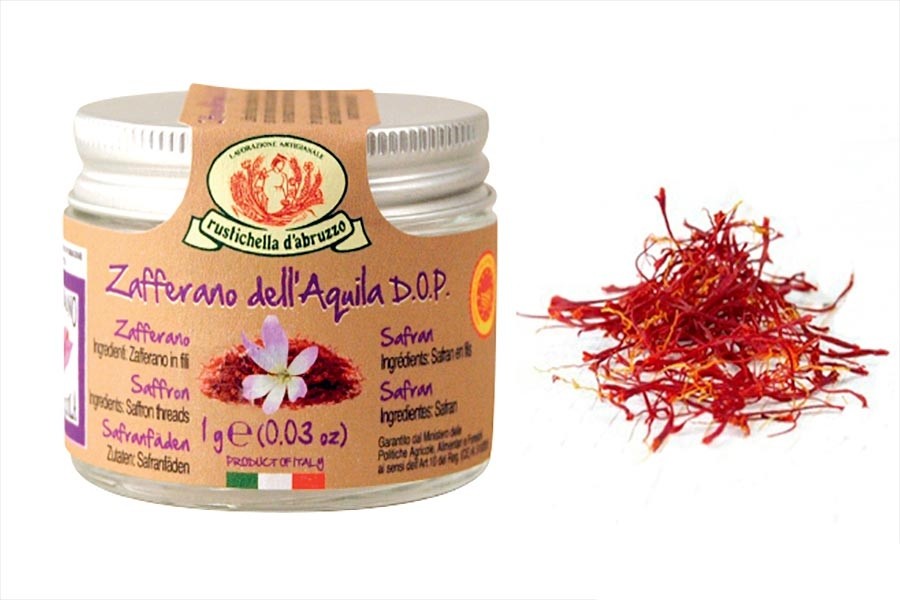Zafferano of Aquila P.D.O.
Product description
Zafferano dell’Aquila PDO is saffron obtained from the stigma of the Crocus sativus L., a plant belonging to the Iridaceae family.
Production Method
The Crocus sativus L. is a small flower with six petals, varying from lilac to violet in colour. A white filament lies within the corolla, ending in three orange or red stigmas which are used to produce the saffron; there are two shorter yellow stigmas which have no commercial value because they have neither fragrance nor flavour. The red stigmas contain crocin, which give the saffron its yellow colour and a distinctive taste to culinary preparations. The cultivation soil is prepared and then left to rest from November to August of the following year. The bulb, which is germinated the previous year, reproduces in spring, generating two new bulbs. During the month of August, the best bulbs are planted close together in one or two rows. Harvesting is carried out by hand during the flowering period, every morning at dawn in order to avoid the flowers opening with the sun. This stage is carried out from mid-October to the first fortnight of November. The stamens and the stigma are separated in the evening and then dried immediately over oak or almond-wood fires.
Appearance and Flavour
Zafferano dell’Aquila PDO has a strong flavour and a crimson-red colour, with an extremely intense aroma.
Gastronomy
Zafferano dell’Aquila PDO is best conserved if it is kept in a glass jar and in a dry place away from direct light. It should be used within a year of buying. Its highly esteemed and refined flavour is used to give flavour and fragrance to many Italian dishes, from first courses, such as Risotto Milanese, to main courses, such as saffron lamb cutlets,and desserts, including ice-cream. To use Zafferano dell’Aquila PDO whole it must be soaked in a little stock or cooking water, while saffron powder, bought in tiny packets, can be added almost at the end of the cooking time. Ten mg of saffron is enough for four people.
Marketing
The product is marketed as Zafferano dell’Aquila PDO. It is available in small paper packets or in small glass jars, whole or powdered.
Distinctive Features
Zafferano dell’Aquila PDO is the product of a territory characterised by a good percentage of active limestone, organic substances and potassium. These qualities contribute to giving this product the unique characteristics which distinguish it from other similar products. Around 200.000 flowers are necessary to produce one kilogramme of Zafferano dell’Aquila PDO, as well as 500 hours of work. In fact, it is the laborious collection and processing of this product that justifies its high price.
History
Saffron was first cultivated in Asia. According to historical sources, this spice was imported to Italy in around the XIII or XIV century, by a Benedictine monk from Navelli. Finding a suitable habitat in Abruzzo, saffron soon became fundamental for the local market, so much so, that it earned the name “Gold vermeil”. Saffron contributed particularly to the development of the city of Aquila, being at the centre of important commercial trading with populations of Central and Northern Europe.
Production Area
The production area of Zafferano dell’Aquila PDO is within numerous municipalities in the Province of L’Aquila, particularly on the Plateau of Navelli, in the Abruzzo region.
Operators: 71
Production(KG): 16
Turnover(MLN€): 0,15
Surface(HA): 3,86

 IT
IT 